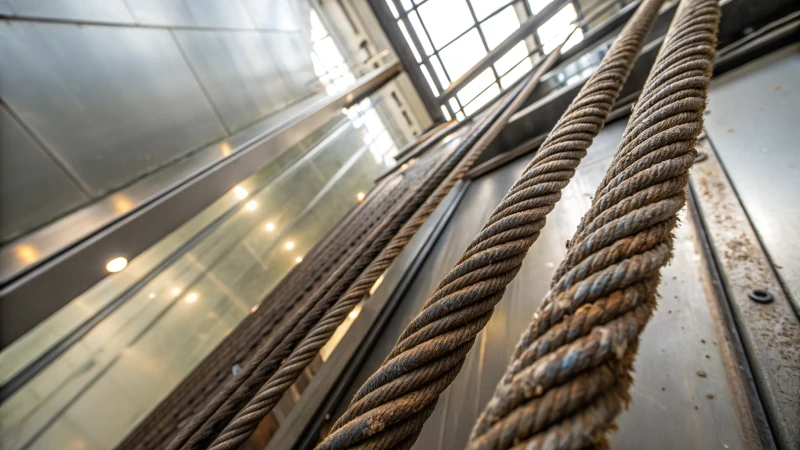
Ever thought about what keeps you safe during your elevator rides?
Environmental factors like temperature swings, humidity, and pollutants can deeply affect the performance and lifespan of elevator wire ropes. Moisture can lead to corrosion, cold makes them brittle, and pollutants speed up wear, demanding protective coatings for extended durability.
I've often marveled at how much I rely on elevators without a second thought. But I recently learned that the performance of those crucial wire ropes can be impacted by various environmental conditions. It's not just about understanding these effects but also exploring specific protective measures to ensure safety and efficiency. In this post, I'll walk you through everything you need to know about maintaining elevator wire ropes amidst environmental challenges.
High humidity causes corrosion in elevator wire ropes.True
Humidity introduces moisture, leading to rust and corrosion on metal ropes.
Extreme cold makes elevator wire ropes more flexible.False
Cold temperatures make the metal brittle, reducing flexibility and durability.
How Does Humidity Impact Elevator Wire Ropes?
Ever wondered why some elevators seem to age faster in humid areas? It turns out, humidity isn't just a comfort issue for us; it’s also a silent enemy for elevator wire ropes.
Humidity can cause elevator wire ropes to corrode faster, shortening their lifespan and posing safety risks. Regular inspections and applying protective coatings can help counter these effects, ensuring your elevators stay safe and functional.
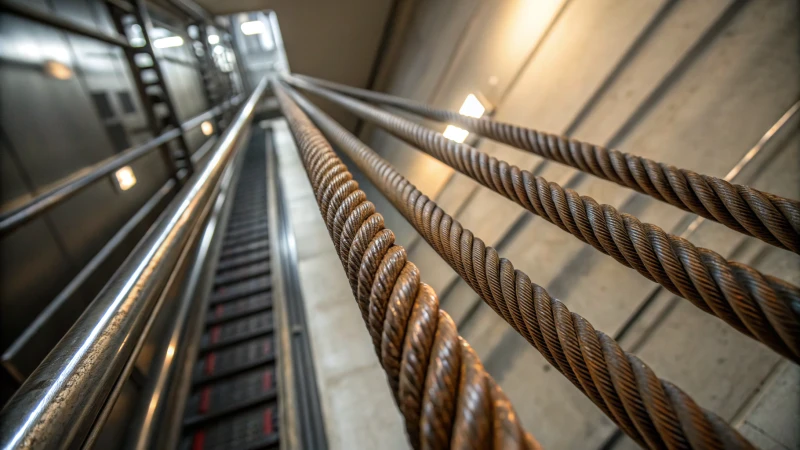
The Science Behind Humidity and Corrosion
Humidity introduces moisture, which reacts with metal surfaces to form rust. I remember when I first learned about the sneaky way humidity can mess with metal. It was during a rainy season, and my trusty old bicycle chain turned into a rusty mess almost overnight. Elevators face a similar battle. This reaction is more pronounced in elevator wire ropes due to their constant movement and exposure to friction. In places like coastal cities or industrial areas, pollutants1 like salts exacerbate this corrosion, making regular checks crucial.
Protective Measures for Wire Ropes
Just like I used to wrap my bike chain in oily cloth to fend off rust, elevator wire ropes need their armor too. Applying advanced coatings such as polyurethane or PVC can significantly reduce corrosion. Think of these coatings as their raincoats, shielding them from moisture. According to ISO standards2, using galvanized coatings can boost resistance by up to 50%. These coatings create a barrier that moisture simply can’t penetrate.
| Coating Type | Corrosion Resistance |
|---|---|
| Galvanized | Moderate |
| Polyurethane | High |
| PVC | Very High |
Best Practices for Maintenance
I’ve found that a little routine check-up goes a long way in avoiding big problems later. Incorporating routine maintenance checks can prevent premature failures. Similarly, regularly inspecting elevator wire ropes for rust or wear can prevent unexpected failures. It's essential to inspect for signs of rust and wear regularly, especially in humid conditions. Lubrication is another hero here—choosing the right kind can repel water and reduce friction, keeping those ropes in top condition and maintaining wire rope integrity3. If I had known this when maintaining my bike, I might have saved myself a lot of trouble!
The Role of Environmental Monitoring
Ever used a weather app to decide if you should carry an umbrella? Installing humidity sensors in elevator shafts works in much the same way—they keep an eye on conditions and warn the maintenance team if the humidity levels start rising dangerously. These sensors alert maintenance teams about rising humidity levels that could affect wire ropes. This proactive approach means issues can be tackled before they become serious problems.
For procurement managers like John or Emma, picking suppliers who not only deliver reliable products but also support technical needs is crucial. They should inquire about the supplier's adherence to ISO standards and the specific coatings used on wire ropes they source. Asking about ISO compliance and the specific coatings used on wire ropes can make all the difference in ensuring long-lasting performance and safety. After all, supplier reliability4 is as important as the product itself.
Humidity accelerates corrosion in elevator wire ropes.True
Moisture from humidity reacts with metal, forming rust on wire ropes.
Polyurethane coatings have low corrosion resistance for wire ropes.False
Polyurethane coatings provide high resistance to corrosion on wire ropes.
How Do Temperature Extremes Affect Wire Rope Durability?
Ever wondered why some wire ropes seem to last longer than others, especially under extreme temperatures?
Temperature extremes can significantly impact wire rope durability by altering their material properties. Heat can weaken the rope's tensile strength, while cold can make it brittle. Choosing the right materials and protective coatings helps mitigate these effects.
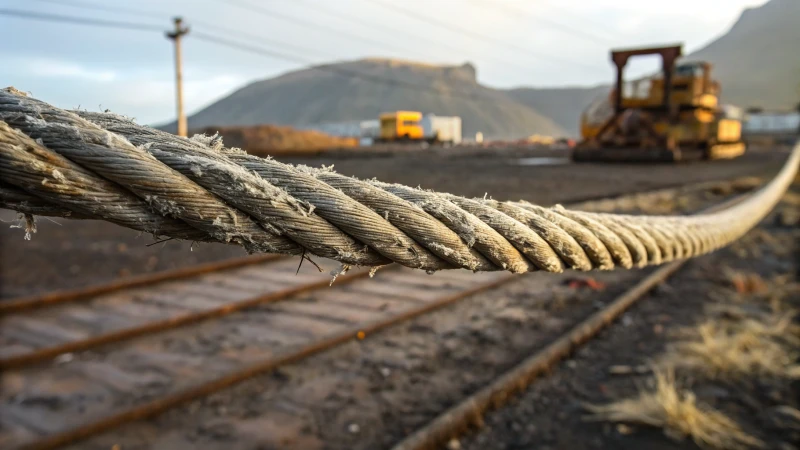
The Impact of High Temperatures on Wire Ropes
I still remember my first job in the oil and gas industry, where I was amazed at how something as simple as temperature could make or break the performance of wire ropes. In those scorching environments, high temperatures can seriously reduce the tensile strength of wire ropes, leading to elongation and potential failure. It's fascinating—and a bit nerve-wracking—to see how rising temperatures alter the steel's microstructure, decreasing its load-bearing capacity. This is a crucial consideration, especially in industries like oil and gas5, where high temperatures are a daily battle.
| Temperature (°C) | Effect on Wire Rope |
|---|---|
| 100-150 | Minor strength loss |
| 200-250 | Significant degradation |
| Above 300 | Critical failure risk |
Effects of Cold Temperatures on Wire Rope Durability
On the flip side, I once had a colleague working in mining who shared stories about equipment struggling in freezing temperatures. Cold can turn wire ropes brittle, and when you're relying on them for heavy lifting, that's a scary thought. These low temperatures restrict the steel's ductility, increasing the risk of breakage under stress. It's a major concern in mining operations6 where freezing conditions are common.
Solutions to Mitigate Temperature Effects
So, what can we do? Well, I've learned that selecting the right materials and coatings makes all the difference. Galvanized coatings or advanced polymer coatings can add an extra layer of protection against heat and cold. For instance, polyurethane coatings have been a game-changer, significantly increasing rope lifespan in harsh conditions.
Polyurethane coatings7 are particularly effective due to their ability to withstand extreme temperatures.
Case Studies: Industry Applications
- Construction: During my time in construction, I saw firsthand how crucial it is to have ropes with high tensile strength and temperature resistance for both safety and efficiency.
- Marine: Coastal applications are tricky because you need ropes that resist saltwater corrosion on top of temperature challenges.
- Industrial Manufacturing: Here, durability across varying operational temperatures minimizes downtime and maintenance costs.
Regular inspections and maintenance are often recommended by industry experts to catch signs of temperature-induced wear early. It's a proactive approach that minimizes unexpected failures during critical operations. Understanding these nuances helps procurement managers like John or Emma make informed decisions when selecting wire ropes for specific environmental conditions. Learn more about wire rope maintenance8.
High temperatures reduce wire rope tensile strength.True
Heat alters steel's microstructure, lowering load capacity.
Cold temperatures increase wire rope ductility.False
Cold makes steel brittle, reducing its ability to stretch.
How do pollutants impact the integrity of wire ropes?
I once learned the hard way how invisible enemies like pollutants can erode even the strongest materials.
Pollutants threaten wire rope integrity by accelerating corrosion and wear, especially in environments rich in salts, chemicals, and moisture. Protective coatings can mitigate these effects, extending rope lifespan significantly.
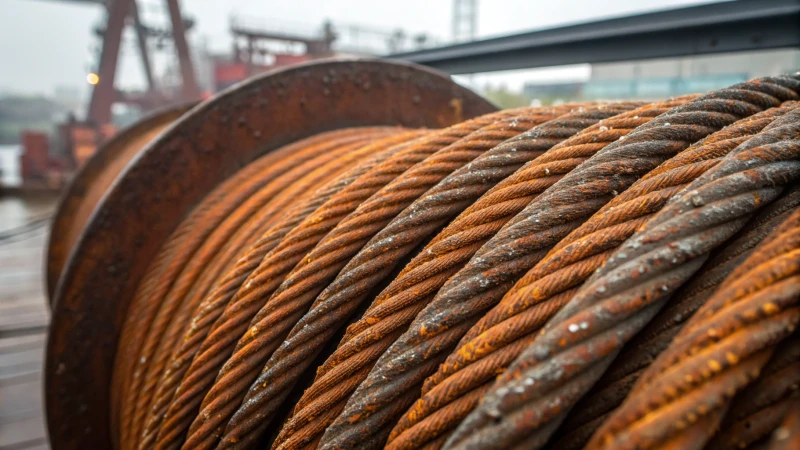
Understanding the Impact of Pollutants
It was during a project near the coast that I first encountered the sneaky menace of pollutants. The salty breeze, which I initially found refreshing, turned out to be a silent saboteur. Over time, I noticed the ropes we used began to degrade faster than expected. That’s when I realized how substances like industrial chemicals, salt from coastal air, and urban pollution accelerate wire rope degradation. These pollutants react with metal, causing corrosion that silently weakens the rope structure. The lesson? Corrosion doesn't just reduce the load capacity9; it raises the risk of sudden failure.
Types of Pollutants and Their Effects
| Pollutant | Effect on Wire Ropes |
|---|---|
| Salt | Causes pitting corrosion, especially in marine environments. |
| Chemicals | Can lead to chemical reactions that degrade metal surfaces. |
| Humidity | Increases the rate of rust formation and overall degradation. |
Salt: I’ve seen firsthand how salt in the air or water can cause pitting corrosion. It’s a sneaky type of damage, creating small pits that often go unnoticed until the damage is extensive. This taught me the value of vigilance and regular inspections.
Chemicals: In industrial settings, even minimal exposure to certain chemicals can trigger reactions that slowly erode wire rope material. This became clear when a colleague shared a story about unexpected failures in a plant setting due to overlooked chemical exposure.
Humidity: Working in areas with high humidity has shown me how quickly rust can form. It’s astonishing how relentless moisture can be, continuously attacking and weakening metal.
Protective Measures
In battling these threats, I've learned that industries often turn to protective measures like:
- Galvanization: A zinc coating on wire ropes acts as a knight’s armor against rust.
- Advanced Coatings: Materials like polyurethane or PVC serve as shields against pollutants.
These protective strategies10 aren’t just helpful—they’re essential. They extend the lifespan of wire ropes and ensure they perform reliably under tough conditions.
Industry Standards and Guidelines
Standards such as ISO 4344 and ISO 18151 are our guides for maintaining wire rope integrity in harsh environments. Regular inspections and maintenance practices recommended by these standards help us spot wear or corrosion before they become critical.
By understanding pollutants' impact and taking proactive measures, we can ensure safer operations and prolong wire ropes' effectiveness in demanding environments. Applying the right protective measures and adhering to industry standards are crucial steps in safeguarding these essential components.
Salt causes pitting corrosion in wire ropes.True
Salt in coastal air or water leads to localized corrosion, forming pits.
Humidity has no effect on wire rope degradation.False
Humidity increases rust formation, weakening the metal structure.
How Can Protective Coatings Extend the Life of Ropes?
Ever wonder how a simple coating can transform the durability of ropes? Let’s dive into the magic behind protective coatings and how they can save time, money, and headaches in challenging environments.
Protective coatings, such as polyurethane or PVC, can extend a rope's lifespan by shielding it from environmental challenges like moisture, extreme temperatures, and pollutants. These coatings help prevent corrosion, minimize wear, and boost durability, ensuring ropes remain dependable even in the toughest conditions.
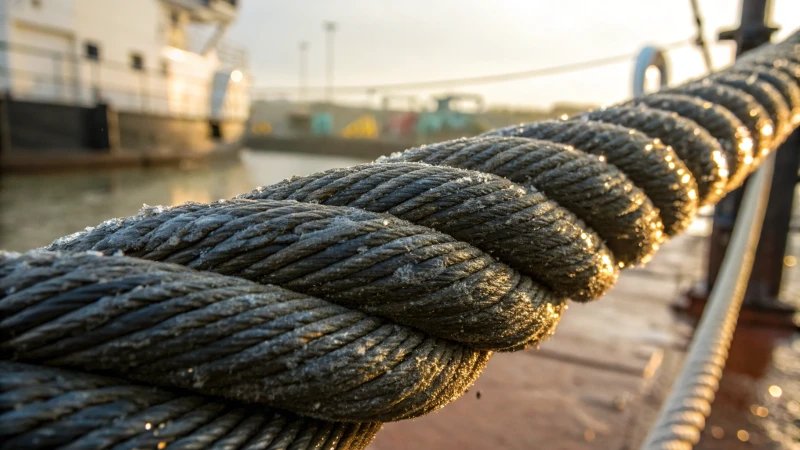
Understanding Rope Degradation
Let's talk about the life of ropes—those unsung heroes of many industries. From my own experience, ropes face quite a battle against nature's elements11. Whether it's humidity soaking through every fiber or salt air slowly gnawing away at its strength, ropes are under constant stress. I remember visiting a coastal construction site where ropes barely lasted a season before showing signs of wear. But here's the good news: protective coatings can significantly extend their lifespan. Think of these coatings as a superhero cape for your ropes, offering protection against those environmental villains.
Types of Protective Coatings
-
Polyurethane Coating
- Incredibly tough against abrasions and impacts.
- Perfect for places with high wear and tear—like that construction site I mentioned.
-
PVC Coating
- Think of it as an all-weather friend—a flexible, waterproof shield.
- Great for outdoor use, no matter what Mother Nature throws your way.
-
Galvanized Coating
- Adds a zinc layer to ward off rust.
- Ideal for marine environments where salt exposure is a given.
| Coating Type | Primary Benefit | Best Suited For |
|---|---|---|
| Polyurethane | Abrasion Resistance | High Wear Environments |
| PVC | Water Resistance | Outdoor Applications |
| Galvanized | Corrosion Protection | Marine Settings |
Benefits of Protective Coatings
- Corrosion Prevention: During my time working on a project near the coast, I saw firsthand how salt can be relentless. Coatings provide a much-needed barrier against corrosion, especially crucial in coastal areas12.
- Enhanced Safety: It's like giving your operations a safety net. By keeping ropes in tip-top shape, you minimize the risk of failure and accidents—something no one wants on their conscience.
- Extended Lifespan: Imagine ropes lasting up to 50% longer. That's less hassle with replacements and more room in the budget for other priorities.
Application Techniques
- Dip Coating: Submerge the ropes in liquid coating material—simple yet effective.
- Spray Coating: Quick and covers well. Just spray it on and you're good to go.
- Electrostatic Coating: This one's like magic—charges ensure even coating across the rope.
Understanding these application methods13 is crucial to getting the most bang for your buck. Each technique has its own perks, whether you're after speed or precision. So next time you're looking at rope options, consider these protective measures—they just might be the game-changer you need.
Polyurethane coatings resist abrasions effectively.True
Polyurethane is known for its exceptional abrasion resistance, ideal for high wear environments.
Galvanized coatings are unsuitable for marine settings.False
Galvanized coatings protect against rust, making them suitable for marine environments.
Conclusion
Environmental factors like humidity, temperature extremes, and pollutants significantly affect elevator wire rope performance, necessitating protective coatings and regular maintenance to ensure safety and longevity.
-
Explore how various pollutants like salts accelerate wire rope corrosion in humid environments. ↩
-
Learn about the ISO standards that define protective coatings' effectiveness against corrosion. ↩
-
Discover maintenance strategies that ensure the longevity and safety of elevator wire ropes. ↩
-
Find suppliers known for high-quality wire ropes and excellent customer support. ↩
-
Explore how high temperatures affect wire ropes' tensile strength and why this matters for safety and performance. ↩
-
Learn about the risks associated with using wire ropes in freezing conditions and how brittleness can lead to failures. ↩
-
Discover how polyurethane coatings extend the lifespan of wire ropes in extreme environments. ↩
-
Find out best practices for maintaining wire ropes to prevent failures due to temperature extremes. ↩
-
Understanding how corrosion reduces load capacity helps readers grasp the importance of maintaining wire ropes in harsh conditions. ↩
-
Learning about advanced coatings informs readers on effective methods to protect wire ropes from environmental threats. ↩
-
Learn about the environmental factors that cause wear and tear on steel wire ropes. ↩
-
Discover why corrosion protection is essential for ropes in coastal regions. ↩
-
Explore various techniques used to apply protective coatings on ropes effectively. ↩

